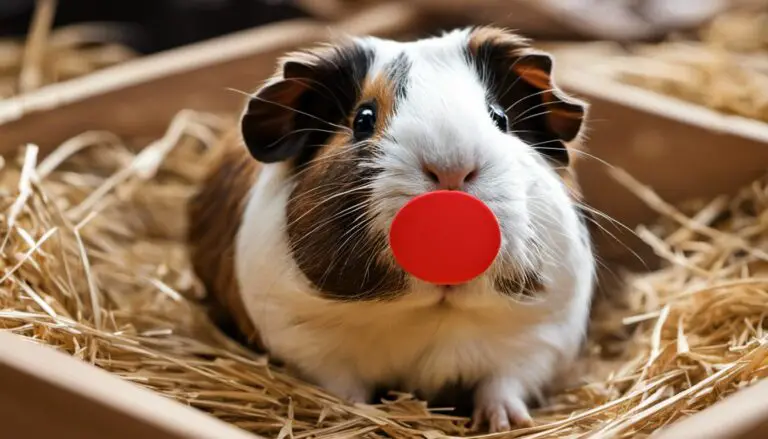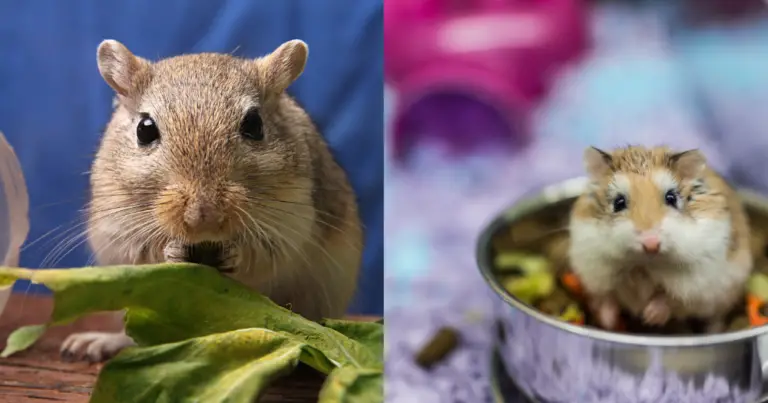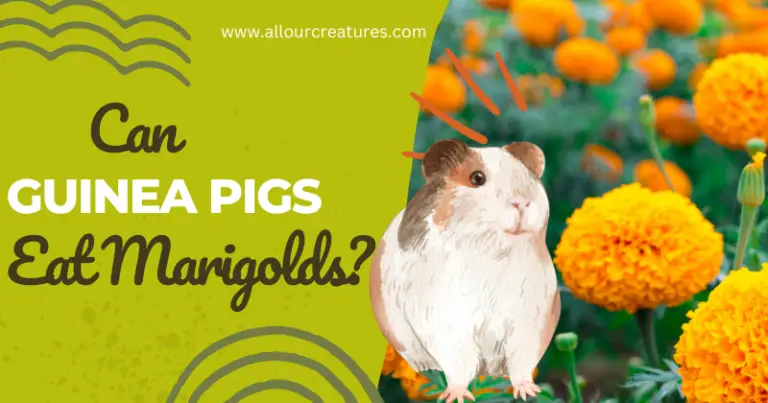What Wild Plants Can I Feed My Guinea Pig: A Casual Guide

Hey, guinea pig lovers! Want to add fresh foods to your furry friend’s diet? In this guide, we’ll explore safe and nutritious wild plants for your guinea pigs and answer your question, “What Wild Plants Can I Feed My Guinea Pig.” Let’s dive in and discover exciting options to enhance their natural diet.

Fresh foods are essential for a well-rounded guinea pig diet. Alongside commercial vegetables and pellets, introducing common plants and wild vegetation can be enriching. Ensure you choose plants with a good source of vitamin C, like raspberry leaves and dandelion leaves.
Be cautious with plants having white or yellow flowers. Some may be safe and nutritious, while others can be harmful. Take the time to identify them correctly before offering them to your guinea pigs.
Keep in mind the presence of oxalic acid in certain plants. While moderate amounts are safe, excessive consumption can pose a risk. Provide a balanced variety of leafy greens to avoid overexposure.
Domesticated guinea pigs have different dietary needs than their wild counterparts. Strike a balance between natural foods and a diet that meets their nutritional requirements.
In this guide, we’ll discuss safe plant options, beneficial common weeds, and the importance of a well-rounded diet for guinea pigs. Let’s embark on this journey together to enrich your guinea pig’s diet with safe and nutritious wild plants.
Get ready to enhance your furry friend’s mealtime with a touch of nature!
Contents
Table of Contents
What Wild Plants Can I Feed My Guinea Pig: Ultimate Guide
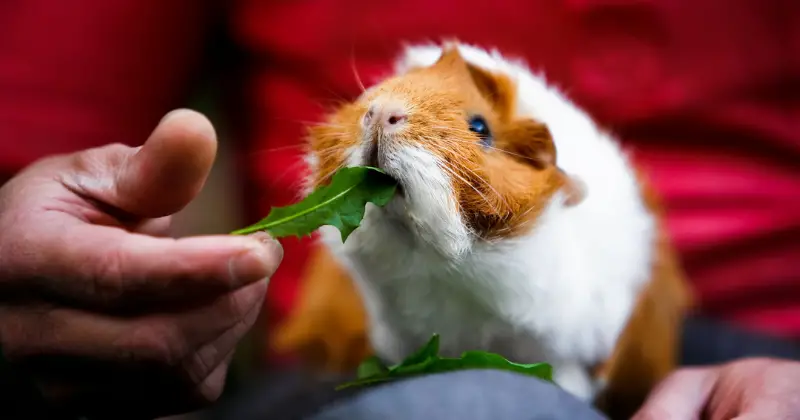
Guinea pigs are well-loved pets that require a healthy and balanced diet to thrive. In their natural habitat, guinea pigs enjoy munching on a variety of plants, providing them with crucial nutrients. Finding wild plants to feed your guinea pig can offer them a more stimulating and diverse meal, but knowing which ones are safe and beneficial is essential.
There are numerous wild plants that can enhance your guinea pig’s diet, promoting their overall well-being. Some popular options include dandelions, cleavers, and chickweeds. These plants not only are tasty treats for guinea pigs but also contain essential vitamins and minerals vital for their health.
Foraging for wild plants can be a rewarding experience for both you and your guinea pig. It enables you to offer fresh, nutritious, and cost-effective forage while giving your pet a delightful and natural dining experience. Just remember to always be cautious when selecting plants, ensuring they are safe and free from pesticides or other harmful chemicals.
Guinea Pig Diet Basics
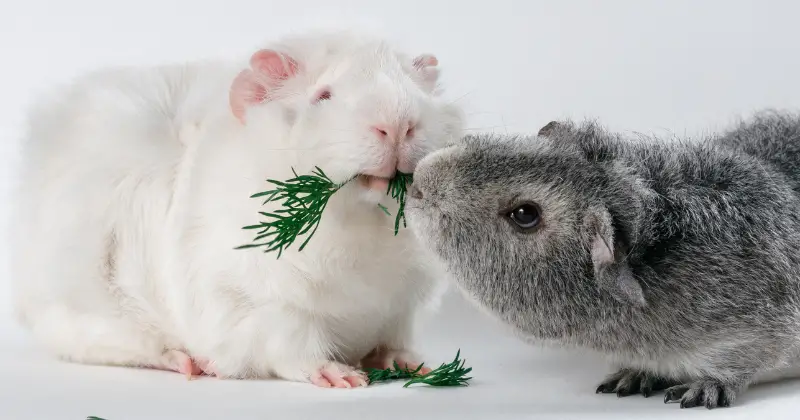
Feeding your guinea pig a proper diet is essential for their health and well-being. To keep them happy and healthy, their diet should consist of a mix of hay, pellets, fresh vegetables, fruits, and a daily dose of vitamin C. Let’s take a closer look at these elements.
First and foremost, hay should make up about 80% of your guinea pig’s diet. Grass hay, like Timothy hay, is the best type, as it helps wear down their teeth and promotes a healthy digestive system. Hay should be available for your guinea pig throughout the day, and it’s important to ensure it’s fresh and free of mold or dust.
Pellets are also a crucial part of their diet, providing concentrated nutrients and extra fiber. When choosing pellets, look for high-fiber, Timothy-hay based guinea pig pellets. Keep in mind that adult guinea pigs usually need just a small amount of pellets per day, around 1/8 cup.
Your guinea pig will also benefit from munching on fresh vegetables, which help supply them with essential vitamins and minerals. Some crowd-favorite veggies that guinea pigs love are leafy greens such as kale, spinach, and romaine lettuce. However, introduce new vegetables gradually and in small quantities to help their stomach adjust.
Fruits should be given sparingly, as a treat, since they can be high in sugar. A few pieces of apple, pear, or strawberries will do the trick. Always remove the seeds and pits from fruits, as they can be toxic to guinea pigs.
Lastly, guinea pigs are unable to produce vitamin C on their own, so it’s essential to supplement their diet with a daily dose. Usually, a vitamin C tablet or a small amount of fresh bell pepper can cover their needs. Just make sure to avoid vitamin C sources high in calcium, which can lead to health issues.
Following these diet basics will ensure your guinea pig gets the proper nutrients they need, but don’t forget to also provide them with clean water to keep them hydrated and happy.
Wild Plants to Feed Your Guinea Pig

Guinea pigs love munching on a variety of wild plants, and incorporating them into their diet can offer different flavors and nutrients. When foraging for wild plants, be sure to avoid areas treated with pesticides, herbicides, or that may be exposed to pollution. Let’s explore some popular options you can safely offer your furry friends.
Dandelion and plantain are two common weeds in gardens and lawns that guinea pigs love. Both of these plants are packed with nutrients, including vitamins and minerals. Additionally, chickweed and clover can also be found outdoors, providing tasty snacks that are rich in vitamins and fiber.
Lavender and marigold are fragrant flowering plants that guinea pigs enjoy. Besides smelling lovely, they also have digestive and antibacterial properties that can benefit your pets. Cilantro, another flavorful plant, is packed with antioxidants and vitamin C and can add a fresh touch to your guinea pig’s meal.
Cleavers and mallow are herbs that are beneficial for guinea pigs due to their anti-inflammatory and soothing properties. Bramble offers a mix of leaves, stems, and berries that provide a healthy addition to their diet. Be cautious with the berries, as they contain small seeds that can pose potential choking hazards.
In most cases, the seeds found in wild plants are safe for guinea pigs. However, keep the quantities moderate and monitor your pet for any signs of discomfort. In addition to the plants mentioned above, guinea pigs can enjoy common weeds and wild grass, which can supplement their standard diet of grass hay and commercial pellets.
Remember, when feeding foraged wild plants to your guinea pig, always introduce them gradually to avoid upsetting their stomach. Once you’ve safely incorporated these natural, tasty treats into their routine, your guinea pig will enjoy the taste and health benefits they provide.
Benefits of Feeding Wild Plants

Feeding wild plants to guinea pigs offers several health benefits, as they are a natural source of vitamins, minerals, and nutrients. Wild plants can provide a diverse range of compounds that contribute to better guinea pig health, and are often easy to find around your local area.
A major benefit of wild plants is that they can be rich in essential nutrients. Guinea pigs need a well-balanced diet to stay healthy, and wild plants can provide many of the nutrients they require. For instance, dandelions are a popular wild plant that guinea pigs love, containing vitamins A, C, and K, as well as calcium and other minerals.
In addition to nutrients, wild plants can also help with your guinea pig’s digestion. Many wild plants are high in fiber, which is important for maintaining a healthy digestive system. Take grass, for example – it’s not only a favorite snack for guinea pigs, but it also helps keep their digestion in check.
Here are some wild plants you can feed your guinea pig:
- Dandelion
- Cleavers
- Chickweed
- Grass
Remember, introducing wild plants should be done gradually. Just like any new food item, you should start by giving small amounts to your guinea pig and observe how they react to it. If they seem to be enjoying their new snack with no adverse effects on their health, you can start including more wild plants in their diet.
Feeding wild plants can ultimately contribute to your guinea pig’s overall nutrition and well-being, so don’t hesitate to explore your local area and forage for some tasty treats. Just be sure you can positively identify any wild plants you find and confirm that they are safe for guinea pigs to eat. Happy foraging!
Identifying Safe Wild Plants

When it comes to foraging for your guinea pig, it is essential to identify safe plants they can consume. Here are some pointers to help you find suitable wild plants in the UK that your furry friend will love.
Firstly, try exploring garden plants, grasses, and fields as these tend to be excellent sources of appropriate vegetation. As a general rule, guinea pigs enjoy consuming broad and long leaf plants. It’s best to avoid plants with thorns or that resemble brambles, as these can be potentially harmful to your guinea pig.
One of the crowd favourites is grass. Though it may seem simple, guinea pigs absolutely adore munching on fresh grass. When foraging, ensure the grass hasn’t been treated with any chemicals.
Your guinea pig may also enjoy ribwort and broad leaf plantain. These plants are easily recognizable and commonly found in fields, meadows, and along roadsides. Remember to wash them thoroughly before feeding to your guinea pig.
Other plants worth considering include milk thistle and chamomile. Milk thistle has several benefits, such as being a natural detoxifier for your guinea pig’s liver. On the other hand, chamomile can provide a calming effect for your pet and help with digestion. Just ensure you’re selecting the correct species, as some varieties may not be safe for guinea pigs.
In conclusion, foraging for wild plants can be a fun and rewarding activity as long as you identify the appropriate plants to ensure your guinea pig’s safety. Happy foraging!
11 FREE FOODS Your Guinea Pigs Can Eat | FORAGING for Safe Wild Plants & Food | Leaves Stems Flowers
Specific Wild Plant Varieties and Their Benefits
Dandelion
Dandelions are a common wild plant that provides a nutritious treat for your guinea pig. The yellow petals can be fed in moderation, while the greens are an excellent source of vitamins and minerals. Be sure to wash them thoroughly before feeding to remove any dirt or pesticides.
Plantain
Broadleaf plantain is another great option for your guinea pig’s diet. This wild plant is easy to find and offers a good source of fiber. You can feed a variety of plantain species, including timothy, to provide your pet with fresh plants to munch on.
Chickweed
Chickweed is a safe and nutritious wild plant for your guinea pig. It is high in protein and calcium and can be fed to your pet regularly. Remember to wash the plant thoroughly before feeding to ensure it’s free from any contaminants.
Clover
Guinea pigs love clover, as it’s a delicious and nutritious snack. It’s a good source of vitamins and minerals and can be fed to your pet as a healthy treat. You can mix clover with other wild plants to add variety to their diet.
Lavender
Lavender is a fragrant and edible plant that can be fed to your guinea pig in small amounts. The purple flowers are a great source of antioxidants, vitamins, and minerals. However, due to its strong scent, some guinea pigs may not be as fond of it as others.
Marigold
Marigold flowers are a safe and colorful addition to your guinea pig’s diet. They provide a range of health benefits, such as supporting the immune system and promoting healthy digestion. Make sure to feed only the petals to your guinea pig to avoid any potential harm from other parts of the plant.
Cilantro
Cilantro is a popular herb that’s not only tasty for humans but also beneficial for guinea pigs. Rich in vitamins and minerals, cilantro can be fed in moderation to add some flavor to your pet’s diet. Be sure to chop it finely before feeding, as larger pieces can pose a choking hazard.
Things to Avoid When Feeding Wild Plants

When it comes to feeding wild plants to your guinea pig, there are some things you should avoid to ensure your pet remains healthy. Although there are beneficial wild plants you can feed your guinea pig, like grass, there are a few things to remember when foraging for food.
Firstly, avoid feeding your guinea pig any wild plant that you’re unsure of its identity, especially potentially poisonous ones like daffodils. Be cautious of plants that may have been exposed to toxins, such as pesticides or pollutants. Providing your pet with contaminated plants might negatively affect their health.
It’s essential to consider the nutritional value of the plants you’re feeding your guinea pigs. Some plants, like spinach and kale, have lots of nutrients but are high in calcium, which makes them unsuitable for regular consumption. Holy can cause digestive issues and kidney problems.
Stick to low-calcium plants and monitor your guinea pig’s intake of these vegetables. Alternating between different types of veggies, such as parsley, lettuce, and carrots, is a good idea to provide a balanced diet.
Moreover, avoid giving your guinea pig too much sugar from fruits. Excess sugar can lead to liver problems and obesity. In case you give them fruit as a treat, consider offering small quantities, like a bit of apple (without seeds).
Certain foods might contain toxins or substances that can specifically harm guinea pigs. For example, rosehip seeds can cause scurvy due to their high Vitamin C content. So, be cautious about offering such foods.
Peppers are safe for guinea pigs, but mint may not suit all guinea pigs. Some guinea pigs might love the intense flavor of mint, but others could be put off by it, so use your discretion when offering this plant.
Lastly, when it comes to leafy greens, it’s always better to stick with romaine lettuce instead of iceberg lettuce. Romaine lettuce has a higher nutritional value than iceberg lettuce, which mostly contains water.
By keeping these guidelines in mind, you can help ensure that your guinea pig gets a diet filled with safe, nutritious, and tasty wild plants.
Risks and Precautions
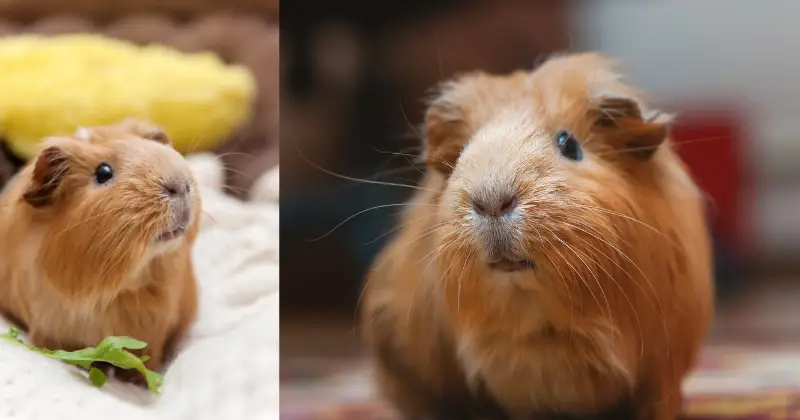
Feeding your guinea pig wild plants can be a nutritious addition to their diet, but it’s essential to be cautious and understand the potential risks. Not all plants are safe for guinea pigs, and some might even harm their delicate digestive system.
One common issue guinea pigs can face is bladder stones. These painful formations can be triggered by an imbalanced diet high in calcium or oxalates. So, when choosing wild plants to feed your guinea pig, opt for low-calcium options. Additionally, it’s essential to consult a vet to ensure you’re not accidentally introducing a harmful plant.
Several herbs, such as thyme and mint, are safe for guinea pigs to consume. But be cautious with strong-smelling herbs, as guinea pigs have an excellent sense of smell, and these fragrances can be overwhelming or even harmful.
Fruits are generally safe for guinea pigs but must be offered in moderation due to their high sugar content. Excess sugar can lead to digestive issues and obesity. Stick to small portions and avoid feeding them fruit seeds that might be toxic.
When it comes to veggies, be selective and avoid feeding guinea pigs vegetables that promote bloating. For example, broccoli and cabbage can cause gas buildup, which can lead to discomfort. Instead, offer cucumber, lettuces, and spring greens, as these are easier on their digestive system.
To maintain your guinea pig’s overall health, ensure their diet includes a proper balance of vitamins and minerals like magnesium, which is crucial for many bodily functions. This can be achieved by providing a mix of appropriate wild plants, fruits, vegetables, and high-quality guinea pig pellets. And always remember, if you’re unsure about a particular wild plant, consult your vet before offering it to your guinea pig.
Is lack of vitamin C can lead to health issues?
Understanding the unique digestive systems of guinea pigs is crucial. Their need for vitamin C sets them apart from other herbivorous animals. Lack of vitamin C can lead to health issues, so make sure to provide ample amounts through safe food sources.
Conclusion: What Wild Plants Can I Feed My Guinea Pig

By incorporating safe and nutritious wild plants into your guinea pig’s diet, you can contribute to their overall health and happiness. Remember, a healthy guinea pig is a happy guinea pig!
Options for guinea pigs are plentiful when it comes to selecting plants. However, be mindful of stones that may be present in plants gathered from waste grounds or flower beds. Prioritize safe plants, such as dandelion plants, raspberry plants, and narrow-leaf plantain, as excellent sources of vitamins and fiber.
To maintain the right balance, include a variety of fresh vegetables like green beans and leafy greens in your guinea pig’s daily meals. These provide essential nutrients while ensuring they get their fill of vitamin C. Avoid feeding them dangerous plants, dairy products, or excessive amounts of fruits to prevent digestive upsets or dental disease.
Don’t forget to ensure a steady supply of fresh water through a water bottle and provide dry pellets in limited quantities. Guinea pigs thrive on a fiber-rich diet, so be sure to monitor their calcium levels and consult your veterinarian if necessary.
Keep in mind the distinctive white V-shape on scarlet pimpernel leaves, as it can help in identifying this safe plant. Consider harvesting wild vegetables from quiet country lanes or using lawnmower clippings from chemical-free lawns.
In conclusion, enriching your guinea pig’s diet with wild plants and fresh foods is a great way to ensure their well-being. Remember the golden rules of offering safe and nutritious options, maintaining the right balance of vitamins, and providing a fiber-rich diet.
So go ahead, explore the bountiful world of wild plants for your guinea pig and witness the joy they experience with every nibble. Your furry friend will thank you with their healthy and contented squeaks!



